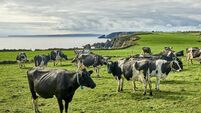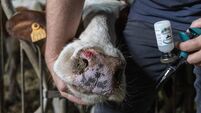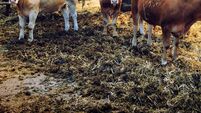Joe Sheehy: Grass cuts feed cost and boosts milk protein

The target set by most top farmers is to produce 80% to 90% of milk from grass (including about 20% from grass silage) at a stocking rate of about one cow per acre, producing 1,300-1,500 gallons of good quality milk each (6,000-6,750 litres).
This is 50% higher than the present average production level in Ireland.
It can and is being achieved with well-bred, healthy cows, high-quality grass, and top class management on reasonably good land with moderate levels of concentrate feeding.
The biggest barriers to increased production going forward are the deficiency of soil nutrients and of course the scarcity of finance due to low milk prices.
Grassland Management
The basic essential for early season grass is to have selected pastures closed since October, and ryegrass swards with adequate lime and fertiliser. Grass measurement and budgeting are useful tools to help farmers manage their grass.
However, the main problem on farms is poor sward quality, generally due to lack of reseeding, or incorrect fertiliser/lime application.
For example, up to 90% of the soil samples being tested have inadequate levels of P, K or lime for optimum grass production, and less than half the required levels of reseeding is taking place every year.
Grassland soil with sufficient lime will release 50kg-70kg of nitrogen per hectare per year more than lime-deficient soil, and will also utilise P much more efficiently.
Research results indicate that early grazing will generate an extra profit of €2.75 per cow per day for each extra day at grass. This is mainly due to a reduction in concentrate costs and an increase of about 0.3% in milk protein.
While the target is to get cows to grass as early as possible after calving, farmers must be careful to monitor available grass so that the first rotation (including silage areas) will last 40 to 50 days.
Grazing should start part-time when about one third of the cow’s diet, or about three hours of grazing, is available.
If ground conditions allow, swards should be grazed tightly to under two inches; this will result in high quality swards and high milk yields in subsequent rotations.
Trials show that pastures grazed tightly early in the season produce two litres of milk per cow per day more than pastures that were not grazed until later, during the period up to early July.
The first few grazings should set the stubble height for the remainder of the year.









